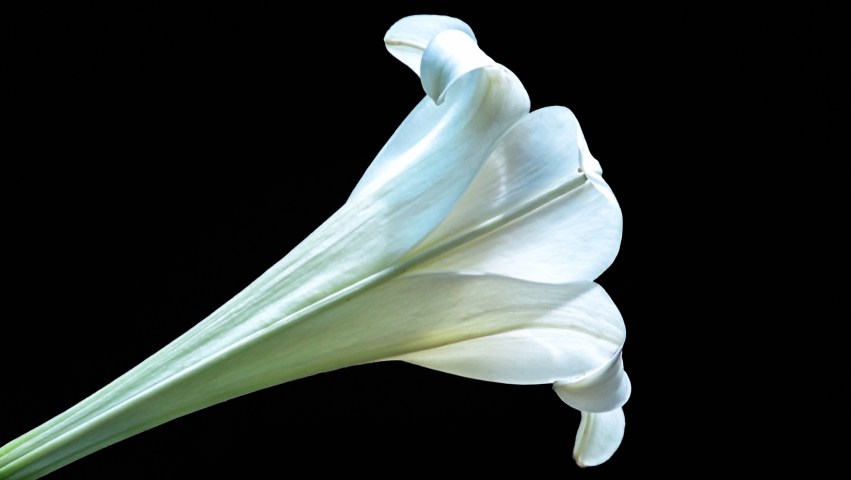From “Well-Known Lilies” in Lilies by Carl Feldmaier:
“The native Turk’s Cap, Lilium martagon, is… a rather modest bloom, well known only to the initiated. Pharmacists, naturalists, and mountain-climbers value the beauty and individuality of this lily, which is usually concealed beneath hedges and undergrowth and which flourishes in mountainous country at heights varying from low wooded slopes up to the middle ranges. It prefers calcareous soil, or at least calcareous subsoil. To stumble upon it growing wild, with its dull, rose, panicled blooms, under beech trees or among viburnum or buck-thorn, is a rare pleasure: one plant may be densely spotted, the next a little less so, and finally one will find a completely clear pink flower….
“This lily was already well known during the Middle Ages, principally on account of its yellow bulb, and was much sought after for its medicinal properties.”
From “Vespers” by Louise Gluck in Poems 1962-2012:
End of August. Heat
like a tent over
John’s garden. And some things
have the nerve to be getting started,
clusters of tomatoes,
stands of late lilies — optimism
of the great stalks —
but why start anything
so close to the end?
Hello!
This is the second of three posts featuring Martagon Lilies from Oakland Cemetery’s gardens, with photos that I took in late July. The first post is Martagon Lilies (1 of 3), and for the final post I’ll convert some of these to black-background images, as I so often like to do.
As we just yesterday wrapped up Mugshot Week here in the city of Atlanta, I thought you might enjoy reading absolutely nothing about it from me — but instead I decided to share this excerpt about the early history of mugshots, from the book Capturing the Light: The Birth of Photography, a True Story of Genius and Rivalry by Roger Watson and Helen Rappaport. Those often-iconic images emerged alongside daguerrotypes, as a development from portrait photography that was so often the subject of early image-making. The nineteen present-day mugshots were all taken a few miles from my house, with the process mostly outside of public view — except for the former president’s extravagant trip into and out of the city, a spectacle that unfolded surreally along streets and past buildings I recognized — but they’ve achieved notoriety and wide circulation, just like the olden-day mugshots received.
Here is the excerpt, from a chapter entitled “The Mute Testimony of the Picture.”
“When [Henry Fox] Talbot first defined photography’s uses in his 1844 book The Pencil of Nature he had no concept of the many fringe uses to which the form would make a contribution — beyond a conventional role in portraiture, landscapes and architectural views, and the documentation of works of art and scientific collections. His inclusion of the reproduction of works of art foresaw photography taking on the task that engraving and lithography had long held and was one of the most forward-thinking uses of its unique features. Talbot’s notion of keeping a photographic record of one’s valuables, as well as legal documents such as wills and deeds, was a prescient insight into photography’s future, for if such things were ever stolen, ‘the mute testimony of the picture’, when produced against a thief in court would, he asserted, ‘certainly be evidence of a novel kind; but what the judge and jury might say to it, is a matter which I leave to the speculation of those who possess legal acumen’.
“This idea of photography being used in court was truly novel but the photograph’s deployment in crime detection was one of the first and most important offshoots of the new genre, though it didn’t start — as many people assume — with the Rogues Gallery of mug-shots compiled by the Pinkerton Detective Agency, which was the source of the well-known ‘Wanted’ posters seen in westerns later in the century. The Belgian police had been the first to experiment with photography in recording the likeness of criminals around 1843-4, and the Danish police had done likewise in 1851. There is evidence too that in the early 1850s in California the San Francisco Vigilance Committee had daguerreotypes made of offenders, and later in that decade the New York Police Department began keeping a photographic record as well….
“Nevertheless, in the early days the use of photography in crime detection and prevention was basically down to the enterprise of individual police departments and prison officers. One such in England was Captain [George Thomas] Gardiner, the ‘ingenious and excellent governor of Bristol gaol’, who in 1856 ‘possessed himself of a photographic apparatus’ for taking the photographs — at a cost of sixpence each — of those criminals he believed would be most likely to reoffend, so that these could be circulated to other forces….
“This principle had already been successfully put into practice in 1855 by a forward-thinking chief constable in Wolverhampton — Colonel Gilbert Hogg — in the pursuit and arrest of a confirmed female con-artist Alice Grey. Grey’s daguerreotype had been found among her abandoned belongings in a lodging house, but copies could not of course be made from it. The enterprising Hogg therefore took it to the photographer [Oscar Gustave] Rejlander (at that time based in Darlington Street, Wolverhampton), who made a calotype of it and printed twenty copies. When these were circulated to police stations across the country, they revealed a trail of fraud and deception dating back five years; the use of the photograph led directly to Grey’s arrest and successful prosecution.”
Thanks for reading and taking a look!





















































































